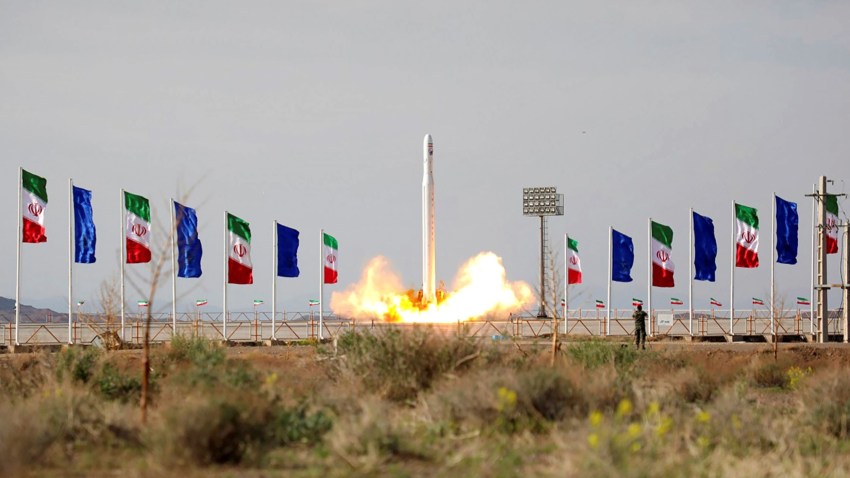In late September 2023, an Iranian satellite launch vehicle, or SLV, successfully placed an imaging satellite into orbit. However, the launch neither showcased a breakthrough in Iran’s space-launch and satellite capabilities nor improved its military capabilities and those of its regional proxies and nonstate allies. Instead, it highlighted the enduring technological challenges that Iran’s space program faces as well as Tehran’s continued inability to independently place militarily useful satellites into orbit.
Although the origins of its space program are unclear, Iran has been pursuing an independent space launch and satellite design capability for at least two decades. In 2004, Iran founded the Iranian Space Agency, or ISA, and began adapting its ballistic missile technology toward a civilian space program. While this was seen by many outside observers as a way to continue developing its ballistic missile capabilities under the cloak of a civilian program, a space-launch capability also provides potential military benefits, including the ability to place satellites in orbit, both for imaging and communications. In any case, by 2008, Iran began suborbital tests of an SLV with a first stage derived from the liquid-fuel Shahab-3 long-range ballistic missile that later became known as the Safir. In February 2009, a Safir placed Iran’s first satellite into orbit.
Much like the Soviet Union’s Cold War-era Sputnik satellite, however, Iran’s first satellite, the 27-kilogram Omid, was a technical achievement but had very little practical value for either civilian or military purposes. Its small size reflected Iran’s limited satellite design and manufacturing capacity, but also the fact that the two-stage Safir SLV was incapable of placing substantially larger or more useful payloads into low Earth orbit, an altitude of 160-1,000 kilometers. And Safir’s outdated liquid-fuel first-stage, which was derived from the vintage 1960s technology of the Soviet Scud ballistic missile, offered little scope for performance growth, making it an evolutionary dead end. Iran therefore began to develop the Simorgh, an SLV built around a cluster of four liquid-fuel rocket engines derived from the Shahab-3 for its first stage.

